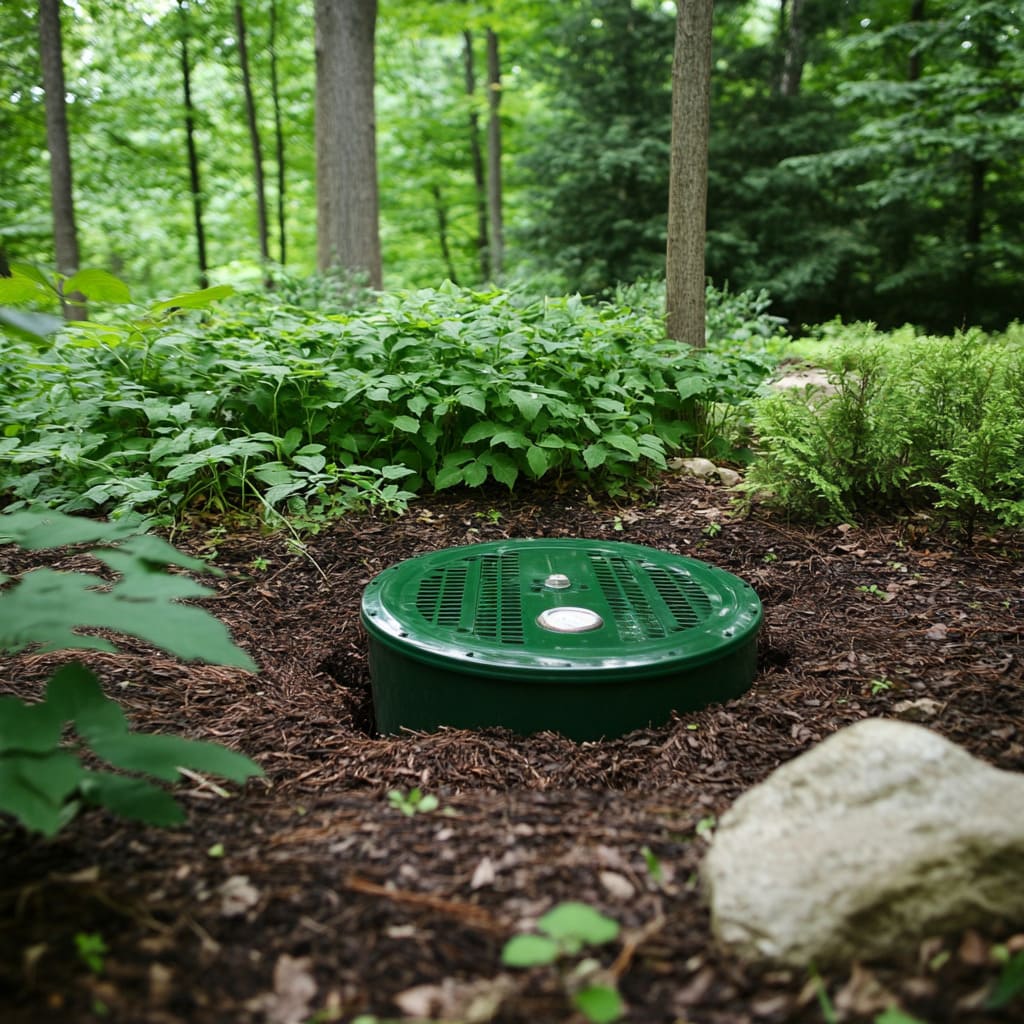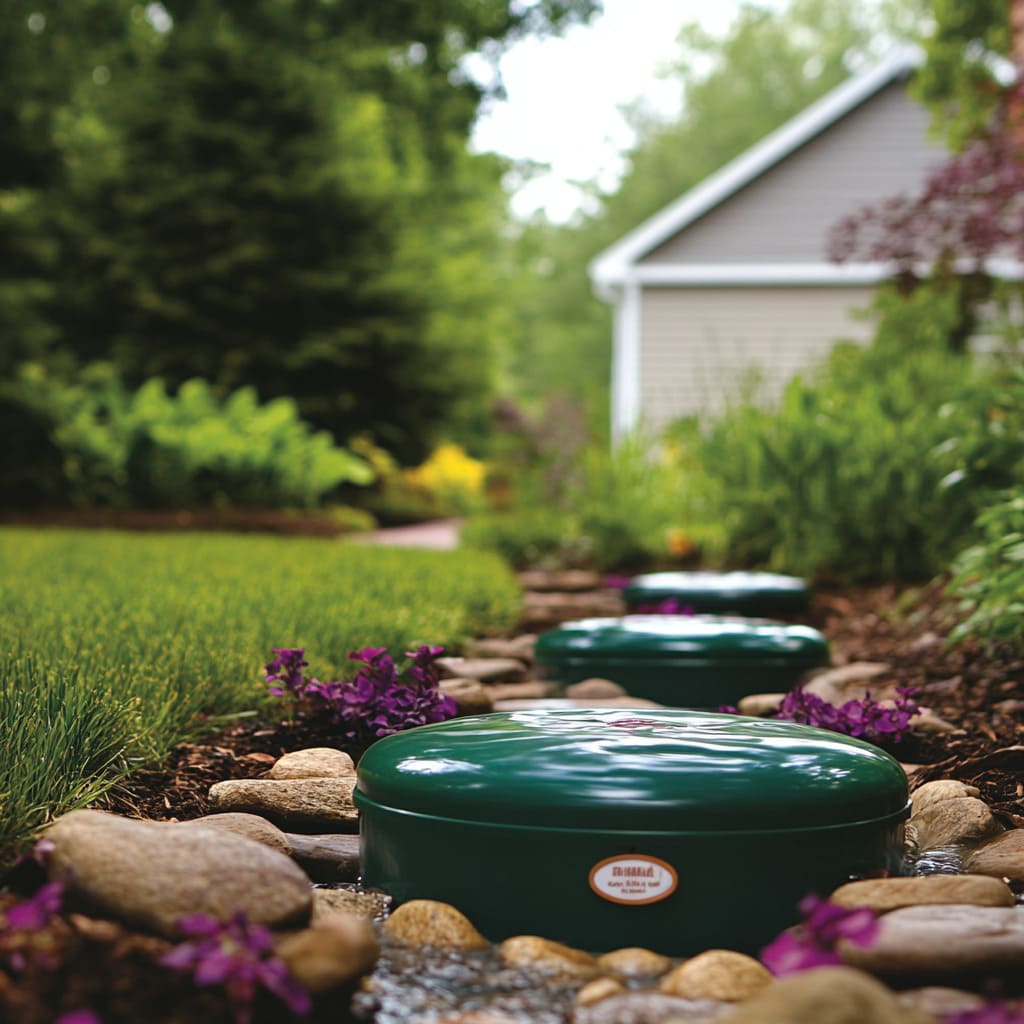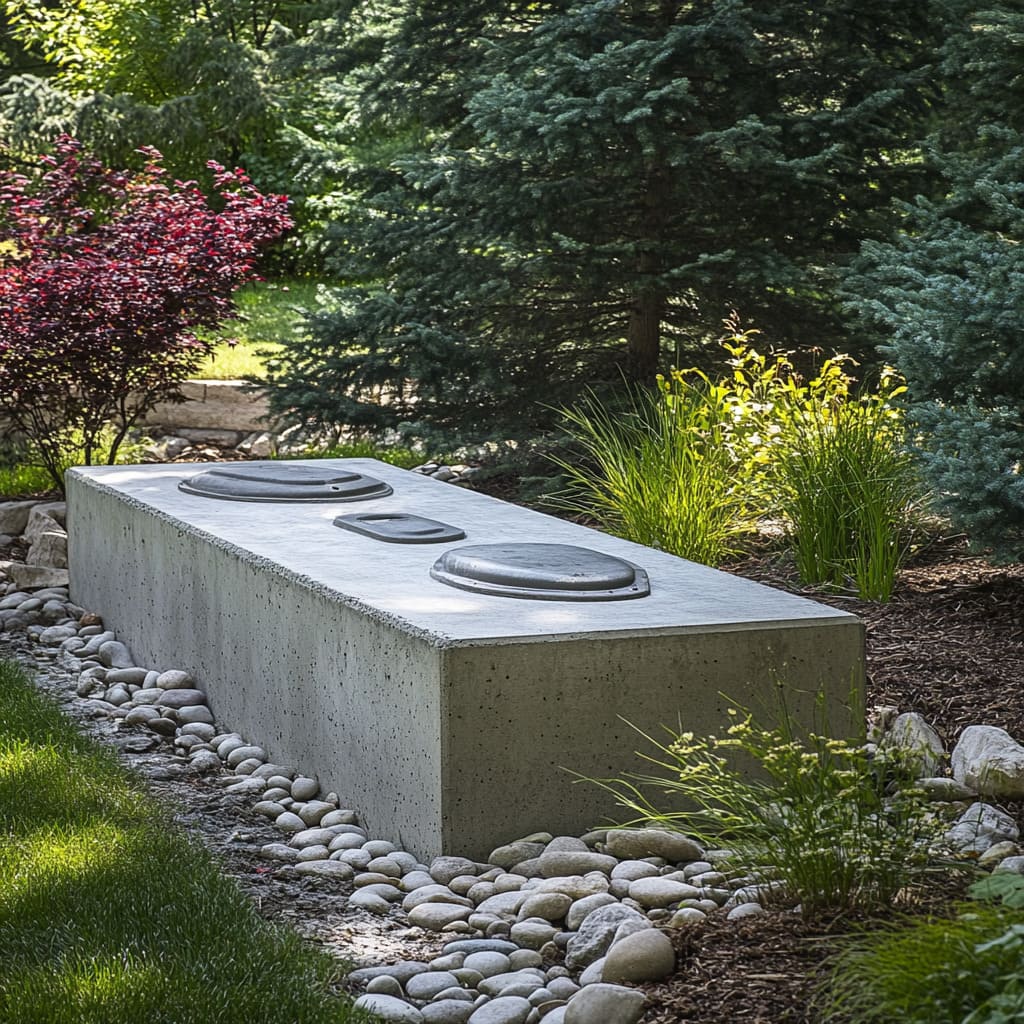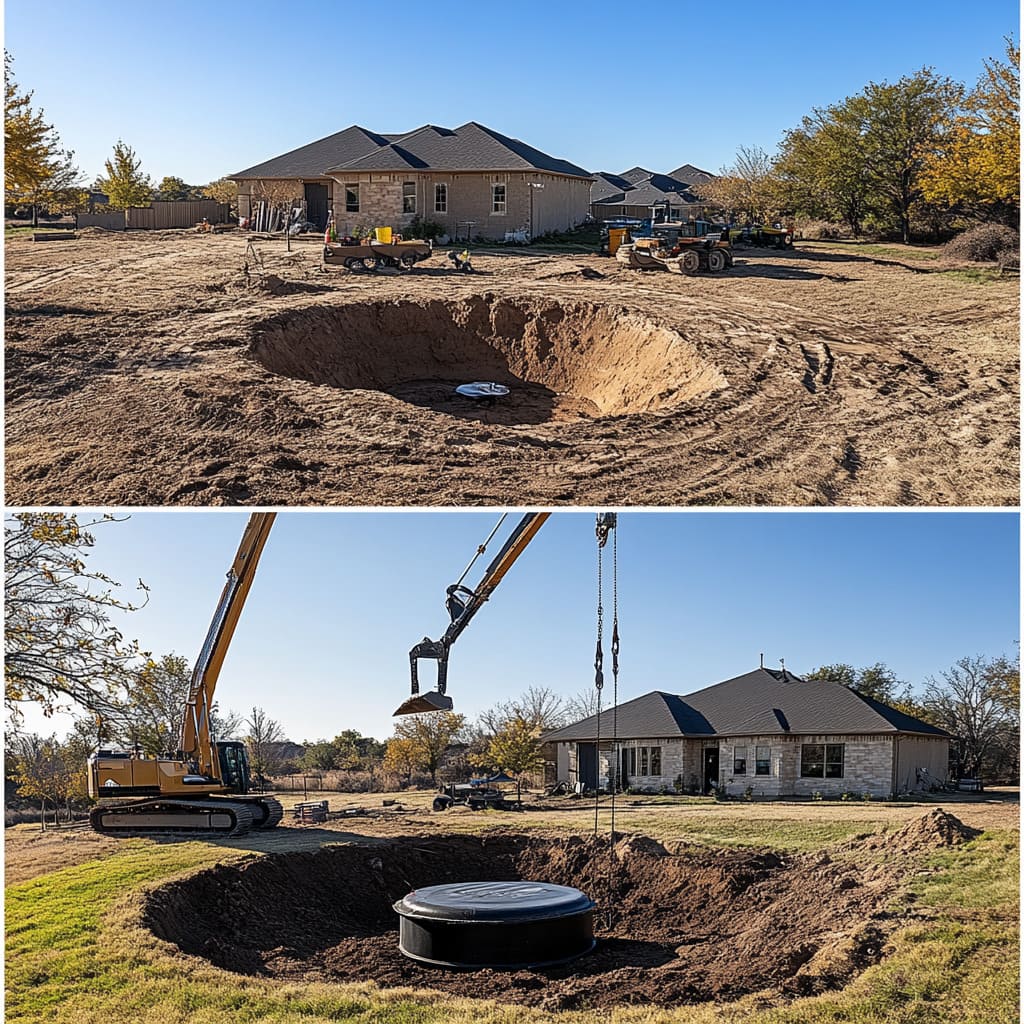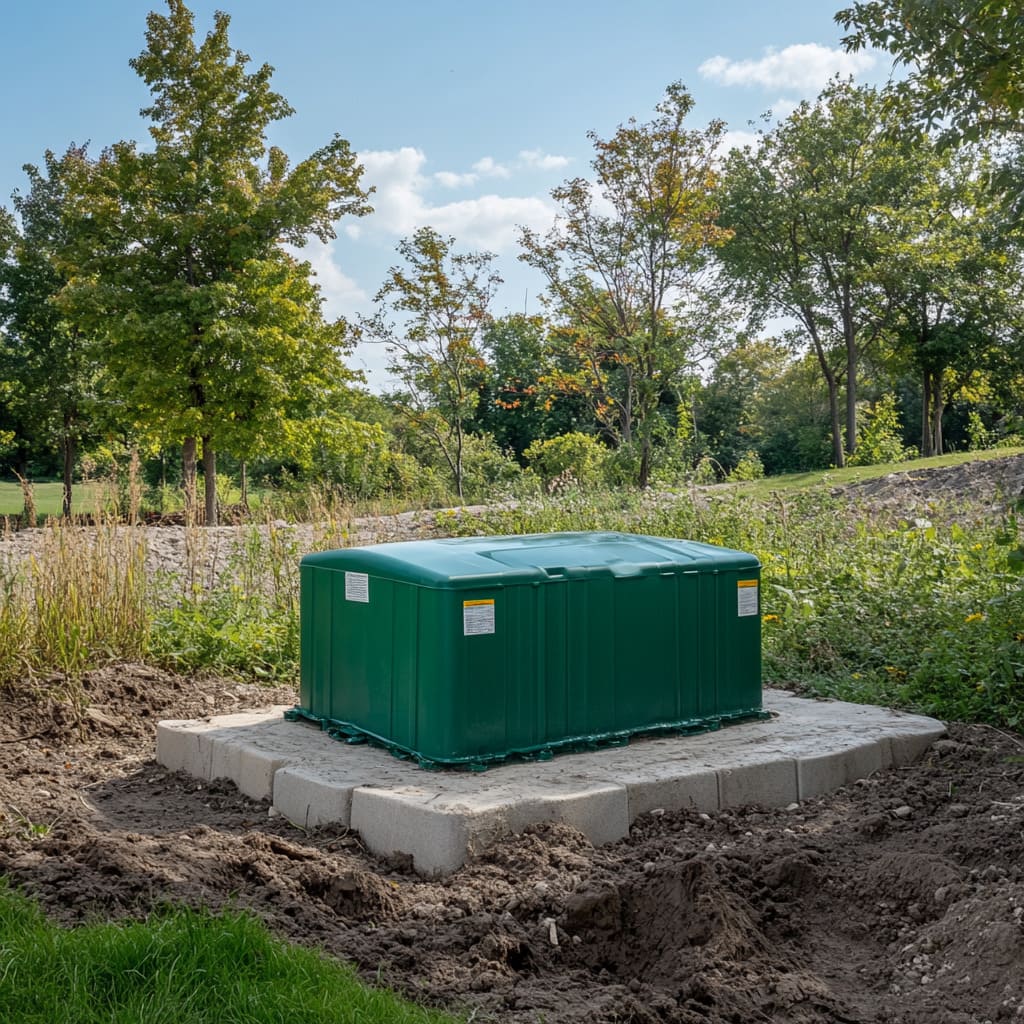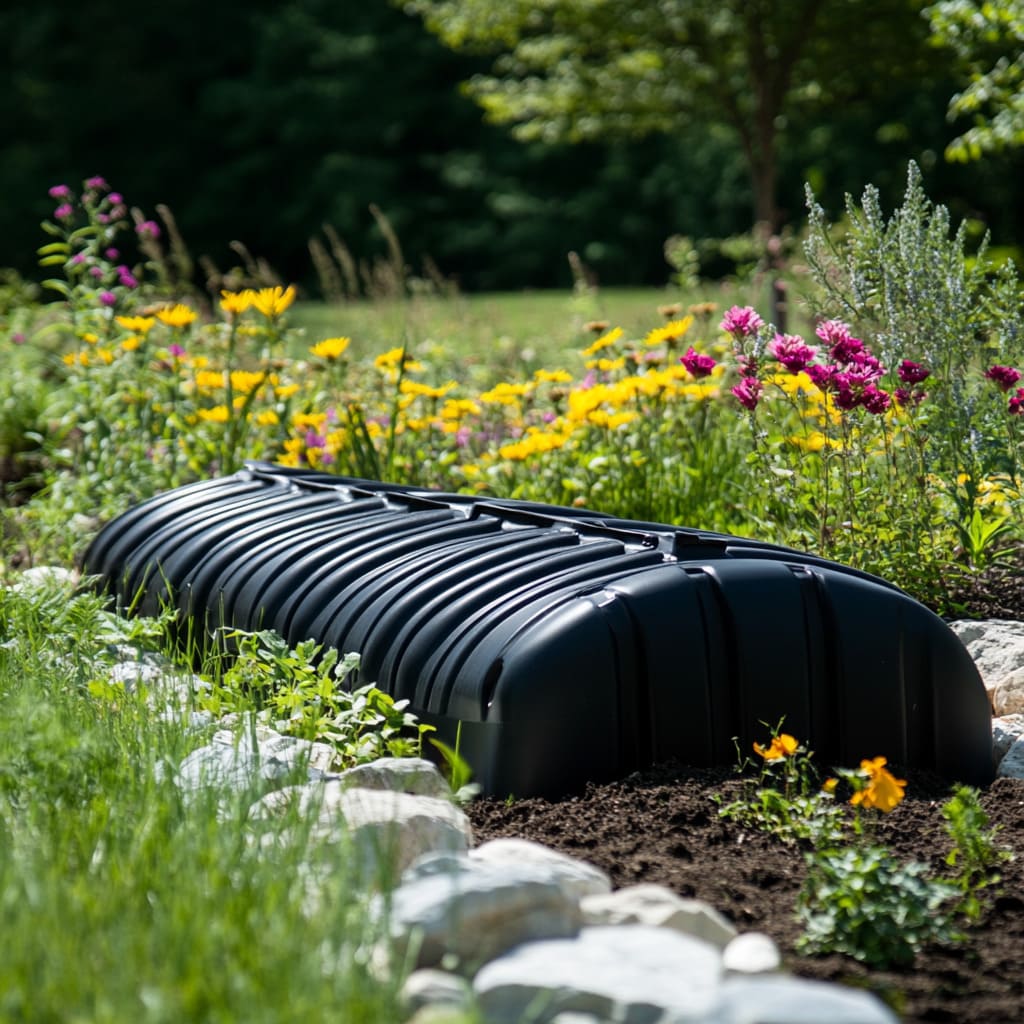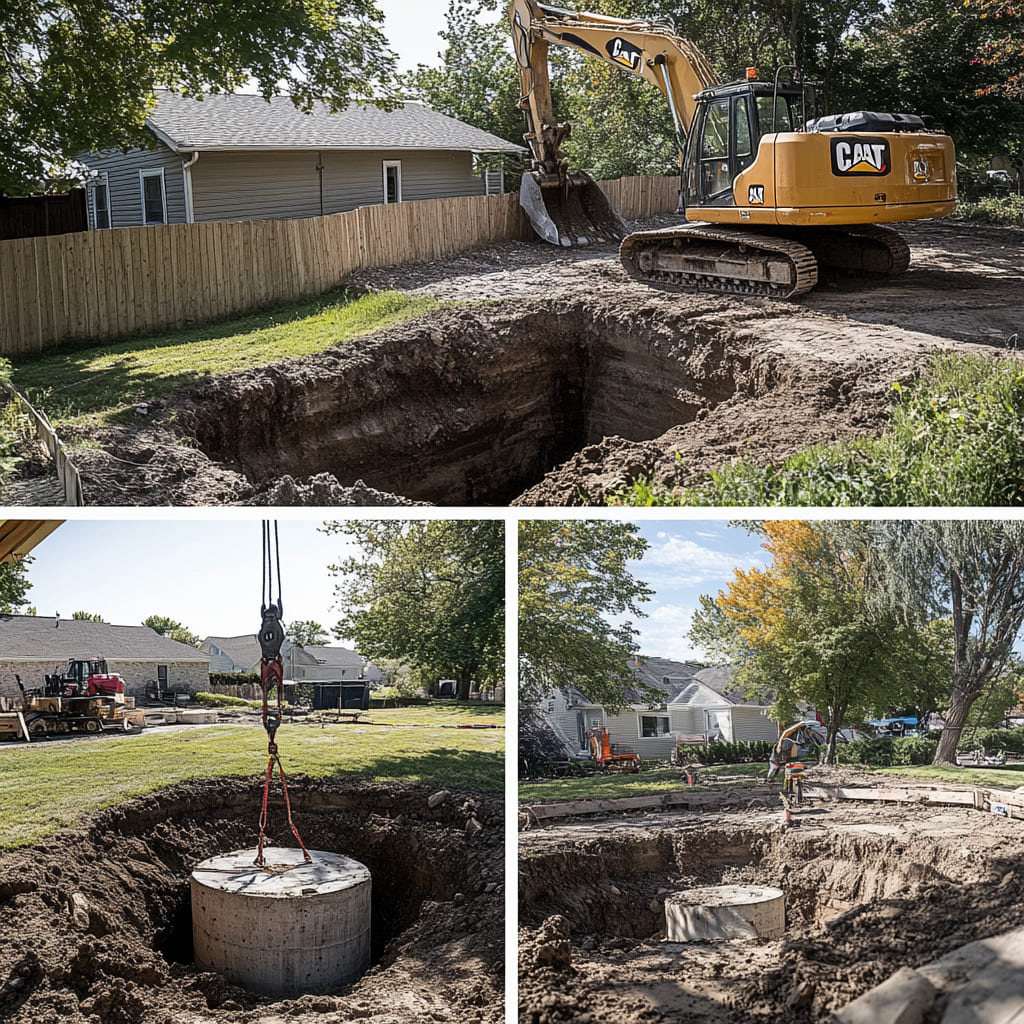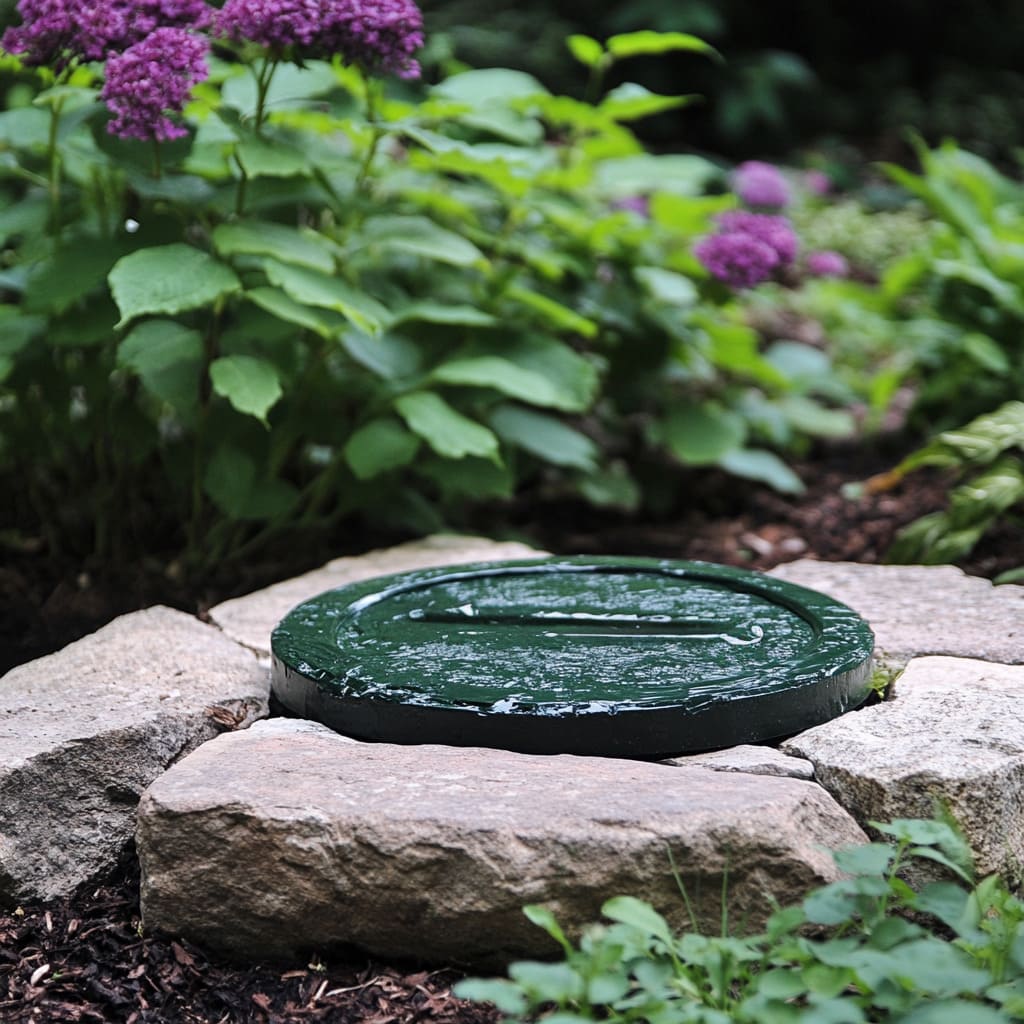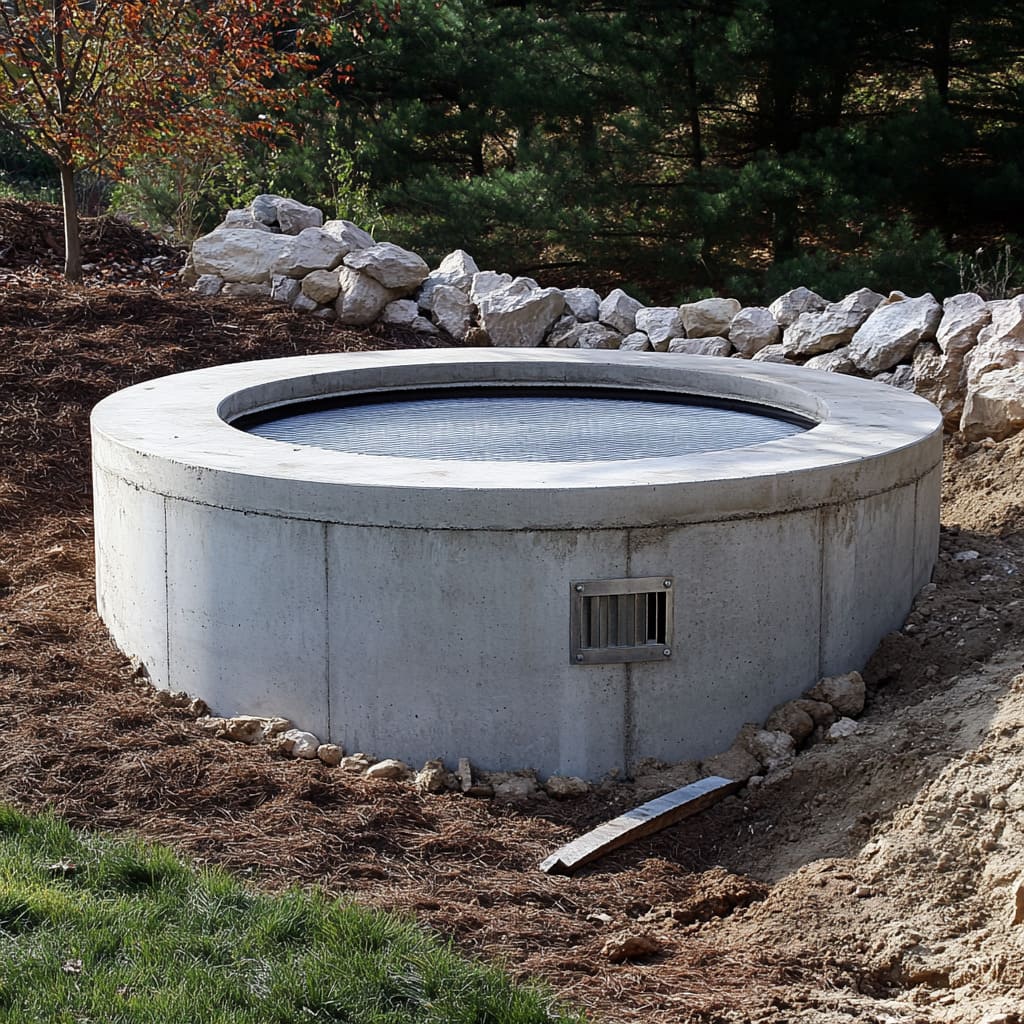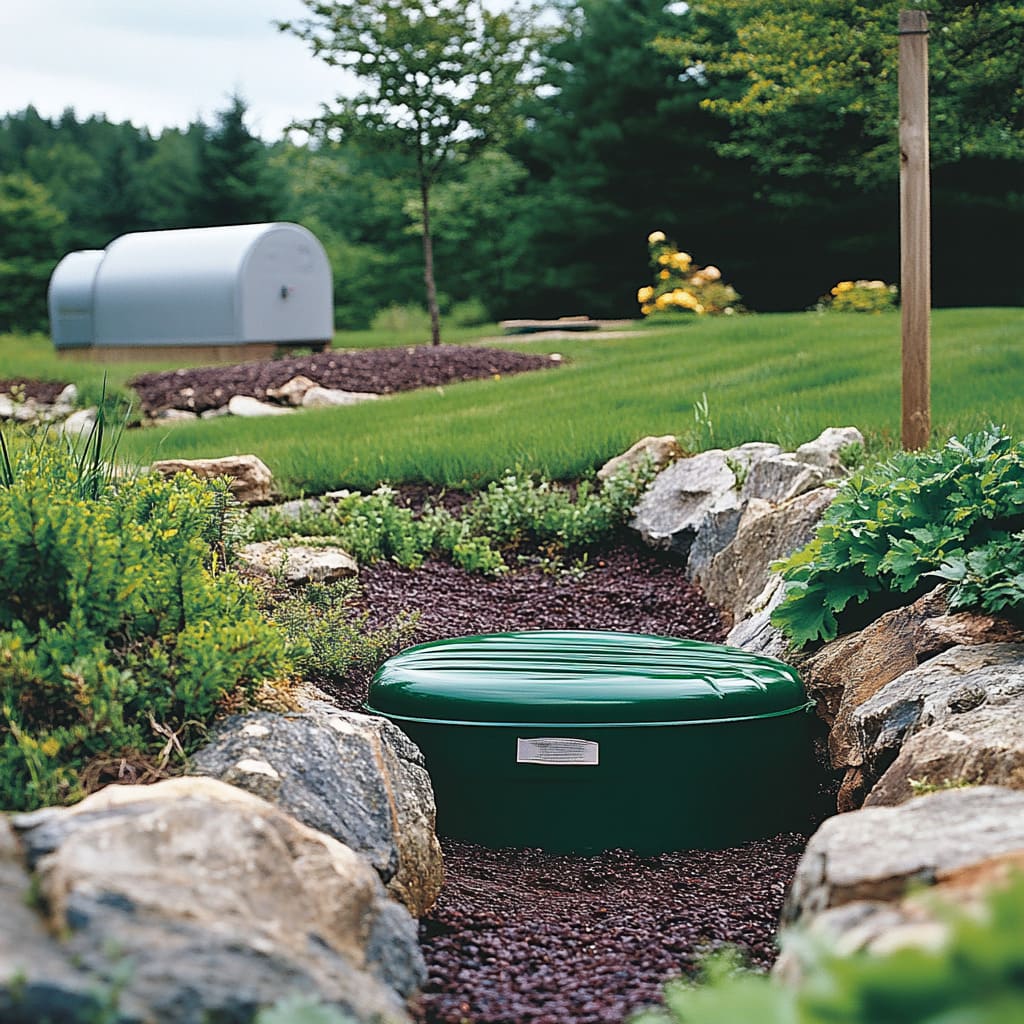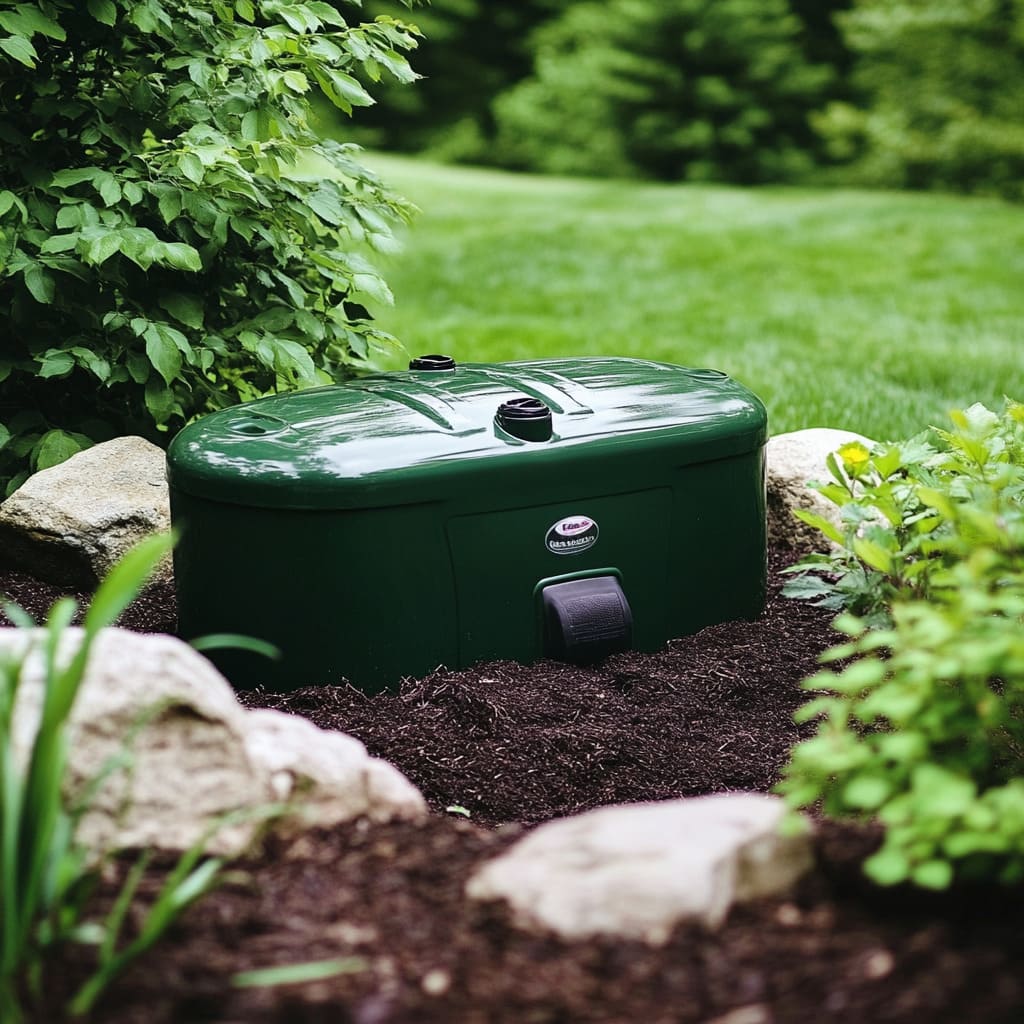As homes expand and town boundaries encroach on uninhabited land, the need for independent waste management systems grows. You may not always consider it, but septic tanks are vital components of modern realty, especially in suburban and rural settings.
If you’re wondering about the role and necessity of septic tanks or contemplating getting one installed in your property, you’re in the right place. These tanks function to manage and treat your household’s waste efficiently and effectively.
Beyond treating household waste, proper maintenance is integral to a successful septic system, making it a worthwhile investment for homeowners. For more detailed information on septic tanks and their benefits, check them out
Septic System Evolution
Your modern septic system has undergone centuries of evolution and development. Ancient civilizations used basic forms of wastewater management as early as the Indus Valley Civilization in 3300 BCE.
The Greek and Roman empires were known for their elaborate sanitation systems, which used aqueducts to transport waste and clean water throughout the city to maintain public health.
- Renaissance Period: Inventive designs for privies and cesspits showed initiative in public health improvements
- 1800s: Septic tanks featuring a two-chamber design became more prevalent, filtering sludge from wastewater effectively
- Early 1900s: Concrete replaced metal and wooden materials traditionally used in septic tanks, enhancing their durability
- Late 1900s to Present: Updates to regulations and technology now provide highly efficient, eco-friendly septic systems, such as aerobic units with built-in disinfection facilities
Nowadays, your septic system is an integral part of your home, transforming wastewater into an effluent that is safe to reintroduce into the environment safely
Operational Mechanics of Septic Tanks
Your daily household wastewater, once flushed, enters the septic tank via the exit pipe. Solid substances gradually sink forming a heavy sludge layer at the bottom.
Lighter materials like grease and oils float, creating a scum layer at the top. Interesting fact: such solids are continuously decomposed by bacteria living within the tank.
The septic tank’s fittings play a crucial role – they prevent scum and sludge from flowing into the drainfield, ensuring only partially treated liquid escapes
| Layer | Contents | Treatment time |
| Top (Scum) | Grease, oils, fats | Continuous breakdown by bacteria |
| Middle (Effluent) | Liquid waste | Partial treatment by bacteria |
| Bottom (Sludge) | Heavy solids | 24-48 hours breakdown |
This liquid also known as effluent undergoes partial treatment inside the tank until it’s ‘clarified’ enough to be safely discharged into the drainfield. The effluent then gets absorbed into the soil as the septic tank refills – a seamless continuous process providing an environmentally-friendly waste management solution
Popular Septic Tanks Varieties
The variety of septic tanks available is similar to plants boasting wide diversity. Just like tall fescue grass, they complement your property’s landscape.
Kentucky bluegrass-like septic systems harvest nutrients from the environment, demonstrating efficient resource utilization that blends seamlessly with your surroundings. Some septic tanks, like the Creeping Charlie plant, spread out efficiently and adapt to various ground conditions, ensuring optimal functionality
- Stonecrop Variants: These are low maintenance, straightforward to install and they blend with the environment
- Jewelweed Models: Known for their fast growth, these are great for urgent needs and improvise drainage solutions
- Dogwoods-like Setup: They brighten up the landscape while providing top-notch wastewater treatment
Analogous to Japanese maples, Eastern redbuds, or cherry trees, many septic systems incorporate artistic designs offering both functionality and aesthetics. Lastly, think of hydrangeas or azaleas – beautiful yet robust.
In a similar vein, reliable septic tanks ensure the beauty of your yard doesn’t compromise quality of sanitation
Important Tank Components Overview
Septic tanks, a vital part of modern realty, consist of multiple essential components. Understanding these parts helps you manage your septic system effectively.
The Venting System
One crucial component is the venting system. It expels gasses produced during waste decomposition, preventing build-up inside the tank.
The vents also equalize pressure inside the system, ensuring smooth operation day in and day out.
Tank Material
Septic tank materials vary by design and include concrete, fiberglass and plastic.
Their durability and resistance to damage differ accordingly. Concrete presents a sturdy choice; however, more lightweight options like fiberglass or plastic tanks offer easy installation and transport for homeowners.
Baffles and Risers
Baffles are internal components that control wastewater flow, effectively diverting solids to the bottom of the tank while allowing liquid effluent to exit. Risers provide access points to your septic tank for regular inspections and maintenance crucial for its healthy functioning over time
Concrete Versus Fiberglass: A Comparison
Fiberglass pools have their benefits, but they’re not for everyone. Initially, they may cost between $50,000 and $80,000.
On the other hand, concrete pools could cost from $50,000 to a much higher sum depending on design complexity and material costs.
- Maintenance Requirements: Fiberglass has a smooth, algae-resistant surface that reduces the need for frequent cleaning and chemical use.Conversely, concrete’s rough surface can harbor algae.
- Durability Factors: Both materials have long lifespans with proper maintenance. Fiberglass can last from 20 to 50 years while concrete may last over 50 years if well-maintained.
- Customization Possibilities: Although fiberglass pools present limited customizable options, concrete allows virtually unlimited options for shapes and sizes.
- Installation Differences: Pre-engineered fiberglass pools can be installed swiftly within days. Concrete pools require on-site construction taking several months to complete.
- Resurfacing Considerations: Fiberglass rarely needs resurfacing but may require occasional repairs. Concrete needs costly resurfacing every decade or so.
- Chemical Usage Discrepancies: Unlike concrete, fiberglass does not increase water alkalinity hence requiring lesser chemicals to maintain pH balance.
In terms of longevity costs, fiberglass edges out due to lower maintenance requirements.
However, if custom design is what you’re after, you might prefer concrete despite its higher caretaking needs. The choice between the two essentially boils down to your predominant needs and preferences
Compartment Division in Septic Tanks
A septic system’s efficiency hinges on its compartment design. Understanding this crucial component can significantly impact the functionality of your household waste management system.
Two Compartment Models
The most common type of septic tank is the two-compartment model. This particular setup aids in more accurately separating solid and liquid waste.
A partition separates these two compartments, which effectively filters out solids, leading to a well-functioning system and less frequent maintenance needs.
Elevating Efficiency Safety
Dividing compartments improves efficiency by promoting beneficial bacterial growth that aids in breaking down waste.
This essential process increases the lifespan of your leach field. This division also bolsters safety by reducing the risk of raw sewage backing up into your house or contaminating groundwater, protecting your health and environment.
Ongoing Maintenance Demand
No matter the compartment division, regular check-ups are vital to keep your septic tank running smoothly. Schedule inspections and pump-out services as per local regulations.
Ignoring maintenance can result in malfunctions, causing unwanted issues such as unpleasant odors, slow drainage, or sewage backup. Keep ahead of complications through preventive care
Outdated Septic Systems Challenges
Outdated septic systems face numerous challenges, often hindering them from meeting current standards or functioning efficiently. Such systems may be susceptible to structural failures and leaks.
What happens during a septic inspection?
Professional inspections are conducted during the home selling process to identify any potential or existing issues within the septic system. These findings can greatly impact a buyer’s decision
Do sellers disclose septic system issues?
Sellers are legally required to disclose all known problems related to the property, including those discovered in the septic inspection. Failure to do so may have serious ramifications.
What are the implications of an aging drainfield?
Aging drainfields may develop a thick biomat layer, inhibiting proper wastewater disposal into the ground. This situation could lead to ponding and untreated wastewater surfacing.
What consequences could problematic septic systems trigger?
A compromised septic system might cause various issues such as backups into your home or ponding. Untreated wastewater could surface, posing potential health risks and negative impacts on your property value
Maintenance Tips for Septic Systems
Regular maintenance of your septic system is essential. Ensuring your tank’s health is kept optimal, prevents unpleasant surprises, and protects your property investment.
Maintaining Your Tank
Firstly, regular pumping is crucial. Each year, have professionals pump out your tank to get rid of solid waste, prolonging the life of your system.
You could also employ bacteria additives. These keep your tank healthy by balancing chemicals and breaking down waste materials efficiently
Watch Your Water
Next, monitor your water use. Excessive water can overtax your septic system and lead to untimely failure.
Implement water-saving actions like using low-flow toilets. Also, do not overload your septic system with non-biodegradable substances.
Avoid flushing items such as paper towels or wipes.
Regular Inspections
Your septic tank requires professional inspection annually.
Experts can identify any issues early, saving you from costly damages and repairs down the line
Steps in Septic Installation Planning
Your journey begins with a comprehensive site assessment, where an expert evaluates the suitability of your property for installing a septic tank. This includes a thorough review of your site’s specific environmental factors such as soil quality, groundwater levels, and the proximity of nearby water bodies.
Next comes anticipating potential obstacles or hazards to provide a seamless installation. Your planning also includes understanding local regulations for septic setups and following state guidelines
- Designing and Getting Permits: After all inspections, you submit a septic design plan in compliance with local codes for approval
- System Installation and Site Excavation: Following permit issuance, you lay out trenches for wastewater absorption and install the essential components of the septic system
- Inspections and Functionality Testing: Pre-operation inspection by local authorities ensures system performance matches design specs and fulfills all regulatory expectations
- Maintenance and Operations: Regular septic tank cleaning every 3-5 years keeps your system operating at peak efficiency. Monitor signs of malfunction for timely repairs
Maintaining accurate records is key to efficient system upkeep. This aids with regular inspections, scheduled pumping, and necessary repairs in the future.
Prioritizing homeowner education can extend septic system lifespan significantly. Teaching conservative water use practices avoids overloading the system and causing unnecessary damage.
Avoid using harmful chemicals that might harm your septic tank. Regular check-ups by professionals ensure smooth operations while preparing you for any needed system upgrades.
Now, you’re well-equipped with knowledge about septic tanks. Their evolution to their installation, it’s all crucial in modern reality.
Maintaining your system is as easy as ordering a water cartage tank. Make your choice wisely now!



